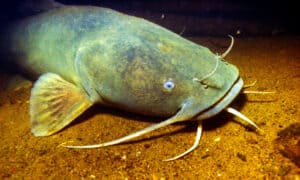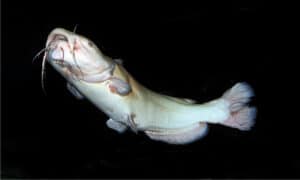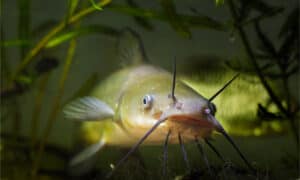There are over 3,000 catfish species across 35 different families. In fact, one out of every twenty known vertebrates on Earth is a catfish. Catfish are found on every continent except Antarctica. Clearly, we can’t cover all the different catfish species, so we will focus on the more common catfish as well as a few of the largest species.
| Common Name | Scientific Name | Average Length | Average Weight | Maximum Weight | Range |
|---|---|---|---|---|---|
| Blue Catfish | Ictalurus furcatus | 2-3 feet | 10-20 pounds | 130+ pounds | United States and Mexico |
| Bullhead Catfish | Ameiurus spp. | 8-10 inches | > 1 pound | 3-4 pounds | North America |
| Channel Catfish | Ictalurus punctatus | 1-2 feet | 2-5 pounds | 40+ pounds | North America |
| Flathead Catfish | Pylodictis olivaris | 1.5-2.5 feet | 10-15 pounds | 100+ pounds | United States and Mexico |
| Mekong Giant Catfish | Pangasianodon gigas | 5-7 feet | 80-100 pounds | 600+ pounds | Mekong River (Asia) |
| Goonch Catfish | Bagarius yarrelli | 2-3 feet | 60-80 pounds | 150+ pounds | Southern Asia |
| Piraiba Catfish | Brachyplatystoma capapretum | 5-6 feet | 80 pounds | 400+ pounds | South America |
| Red Tail Catfish | Phractocephalus hemioliopterus | 3-4 feet | 40 pounds | 120+ pounds | South America |
| African Sharptooth Catfish | Clarias gariepinus | 3-5 feet | 60-80 pounds | 130 pounds | Africa and the Middle East |
| Wels Catfish | Silurus glanis | 4-6 feet | 80-100 pounds | 450+ pounds | Europe and Asia |
The Largest Catfish Ever Caught
Mekong giant catfish grow to absurd sizes, as seen in this tweet from WWF Resilient Asian Deltas.
The largest catfish ever caught was landed in 2005. A fisherman caught an astounding nine-foot, 646-pound Mekong giant catfish in northern Thailand. That is as heavy as an average grizzly bear!
The fish is not only the largest catfish ever caught but also the largest freshwater fish of any species ever recorded. The fish was not recognized by the International Game Fish Association (IGFA), though. IGFA is the official keeper of world fishing records. Because the fish was caught in a net and not with a rod-and-reel, it is not recognized as a world record. Instead, IGFA recognizes a Mekong giant catfish caught in 2010 as the world record. This catfish weighed 260 pounds. Obviously, it was still a giant, but it was over 400 pounds smaller than the largest catfish ever documented.
The “Big Three” in the U.S.
Blue, channel, and flathead catfish are known as the “big three” of U.S. catfish. They are targeted by American anglers more than any other catfish species.
Blue catfish are the largest of the “big three.” Blues weighing 20 pounds are common, but individuals over 100 pounds are abundant in U.S. waters. The world record blue catfish was caught in Virginia in 2011. That fish tipped the scales at 143 pounds. That’s the weight of an average cougar!
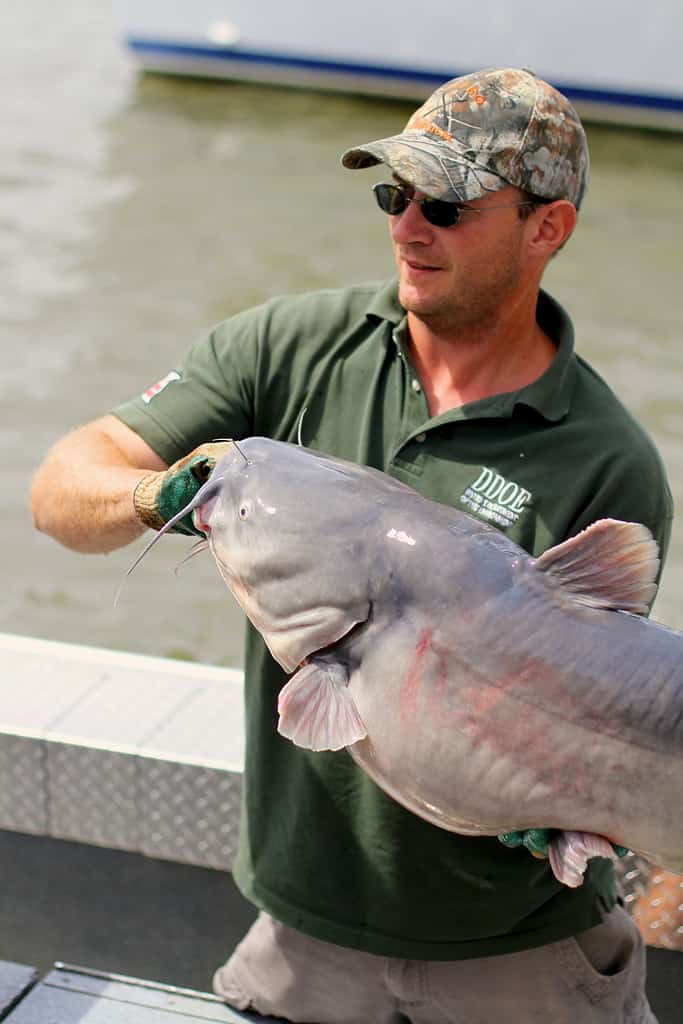
Blue catfish are the largest of the “big three.”
©U.S. Fish and Wildlife Service Headquarters / Public domain – License
Channel catfish are the most common catfish species in the U.S. They are also the most sought-after catfish for table fare. Channel catfish fillets are mildly sweet with no offputting “fishy” flavor. They are the smallest of the “big three,” averaging less than five pounds. They can grow upwards of 50 pounds in the right conditions, though. The world record channel catfish weighed 58 pounds. It was caught in 1964 in South Carolina. That’s the equivalent of four average bowling balls.
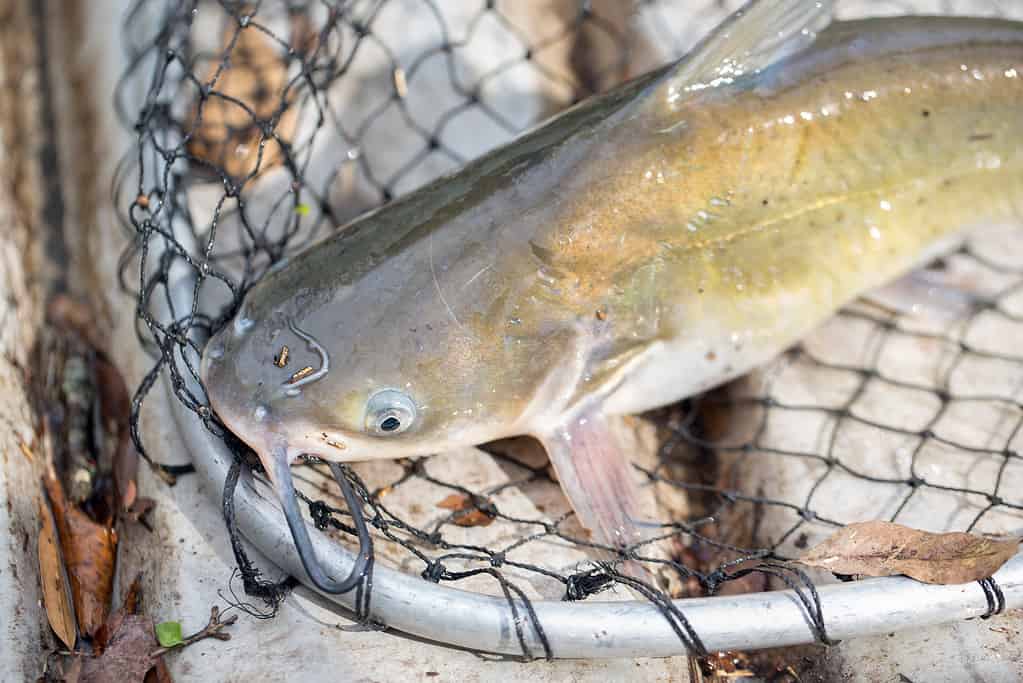
Channel catfish are the most common (and most delicious) catfish in the U.S.
©iStock.com/Jenniveve84
Flathead catfish are sometimes known as shovelheads. They typically weigh around 10 pounds, but there are flatheads caught every year in the U.S. that are 80-100 pounds. The world record flathead catfish was caught in 1998. That Kansas fish weighed 123 pounds. That’s about the same weight as a full-grown Rottweiler.
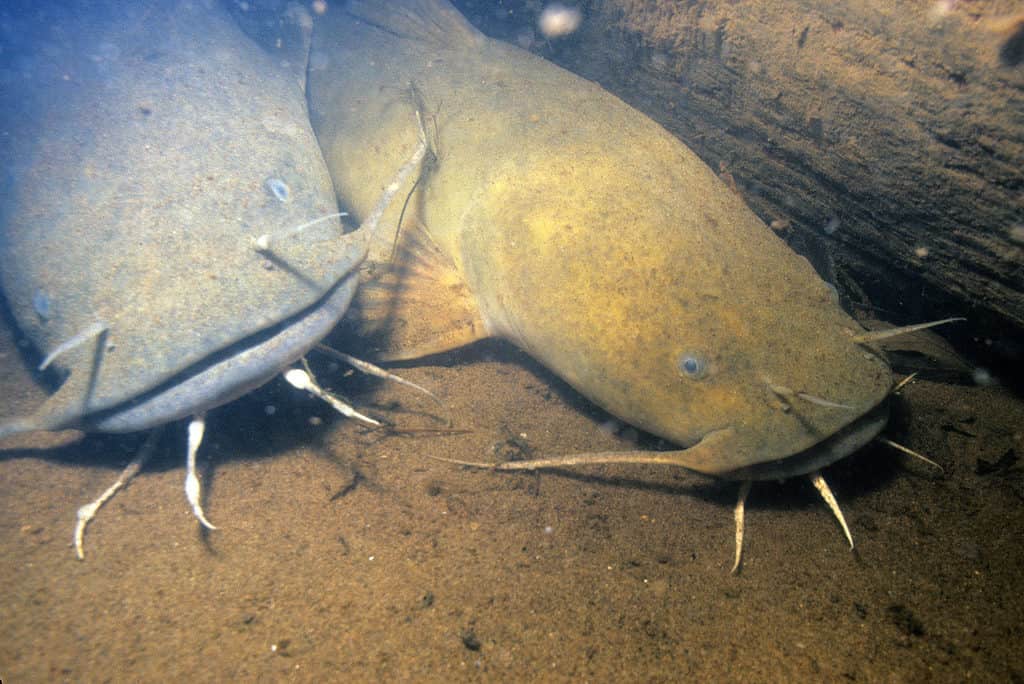
Flathead catfish aren’t going to win any beauty contests, but they are a favorite among American anglers for their large size and hard-fighting nature.
©iStock.com/stammphoto
Best Places and Time of Year to Catch Catfish in the U.S.
Spring is often the best time to catch catfish. After a dormant winter, the fish shift into a feeding frenzy. Late March through late May is often prime time for catfish.
Summer can also yield big catfish hauls. Like many other game fish, catfish are less active in the middle of the day during the peak of summer. Evenings, overnight, and early mornings can bring the best results.
Fall can be tricky. If water temperature changes rapidly, catfish are less inclined to bite. However, if the weather remains stable for a short stretch, the catfish bite can really turn on in the fall.
Catfish are bottom feeders. They use their barbels (whiskers) to find food in the often dark, murky conditions of lake and river bottoms. Placing your bait near or on the bottom often brings the best results.
Deep ponds, large lakes, river holes, and backwaters can be stacked with catfish.
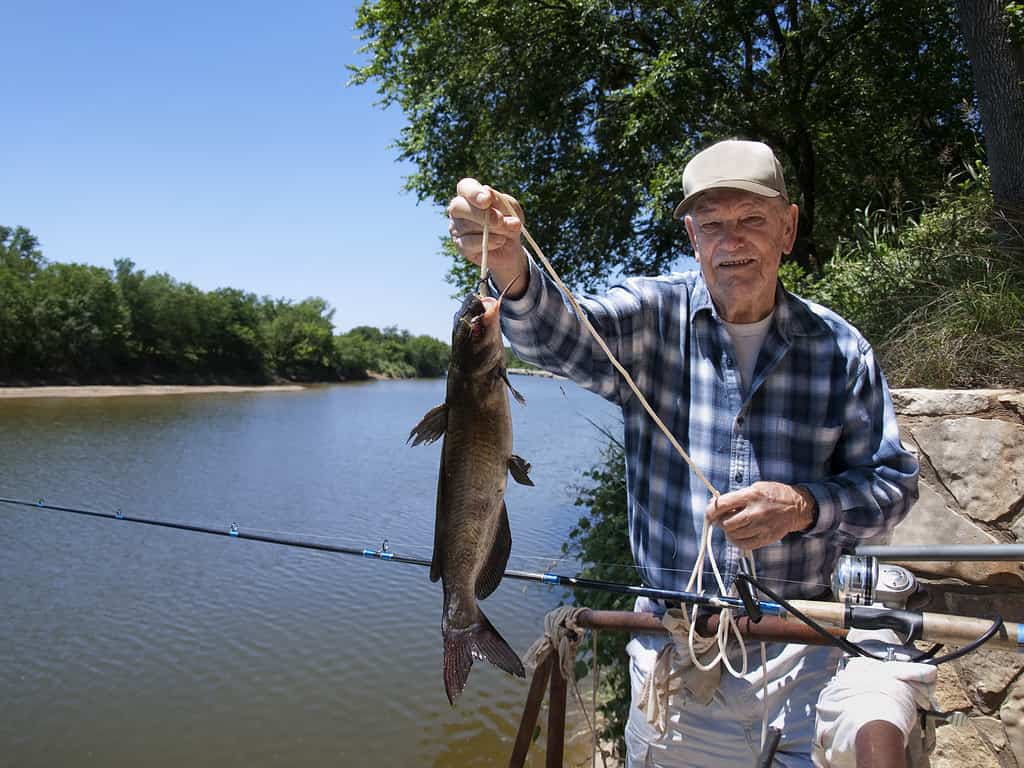
Mid-late spring is a great time for catfish.
©iStock.com/nightfrost
The photo featured at the top of this post is © Thomsonmg2000, cropped and adjusted by Kostka Martin / CC0 – License / Original
Thank you for reading! Have some feedback for us? Contact the AZ Animals editorial team.



